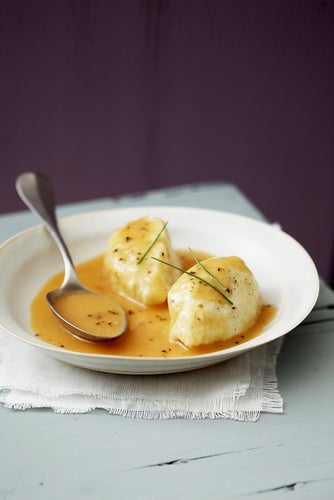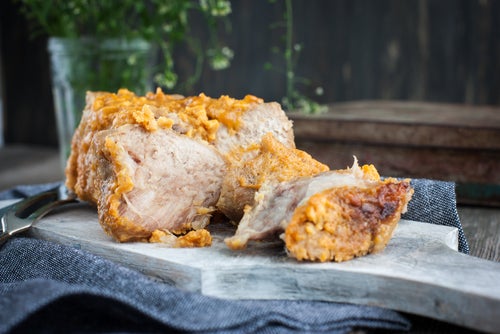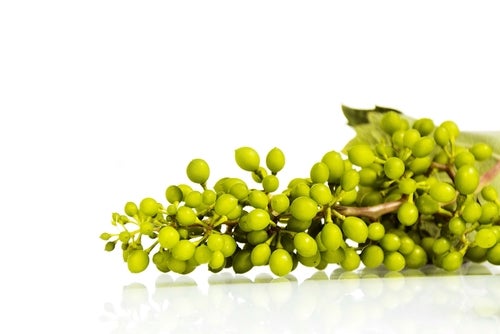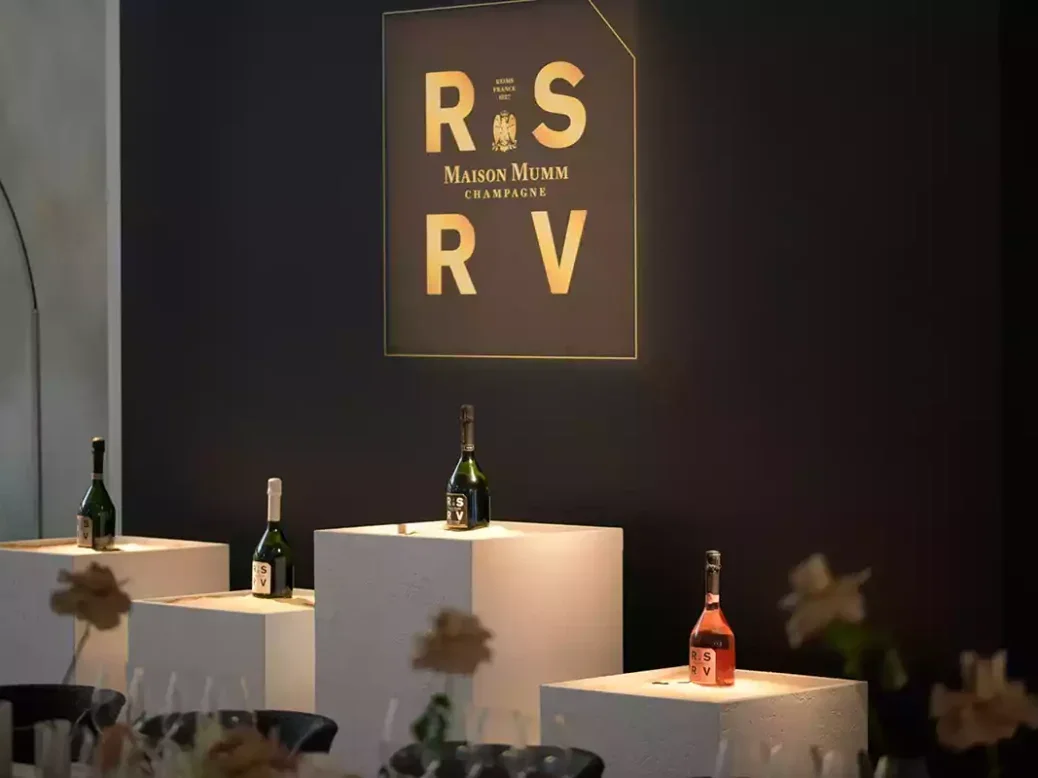
Billed as a new sensory experience highlighting the texture of the wines derived from their individual terroirs, during a dinner specially crafted by a three-Michelin-starred chef, the Champagne Mumm RSRV event got off to a conventional enough start.
First, an apéritif, RSRV Cuvée 4.5 in magnum, on a roof terrace in Paris’s chic, discreet Hotel Pourtalès on a warm, summer evening. Then, short introductions from the chef and RSRV global gastronomic ambassador Sato Hideaki, Mumm’s new cellar master Yann Munier (open, engaging, instantly likable—more on whom later), and alongside him, Cyrille Tota of Le Toucher du Vin (meaning the touch of wine on the palate, the texture—or what Cyrille calls “a goût approach” to tasting that is apparently now being taught in 60 wine and catering schools in France).
Next, we went indoors to be seated for the tasting and dinner. Chef Sato talked briefly about how food and wine should be about using all the senses, not just mouth and nose, and recalled that, when he started out, a chef said to him that eating with your hands was much better than using a knife and fork or chopsticks. I glanced with relief at the table laid with cutlery. But then things began to get a bit unusual.
Soon I was untying a heavy black-leather roll and stroking each of five different black textiles attached inside, like pages in a book. Next, I was feeling each fabric between finger and thumb, then stretching them one by one. It reminded me of playing pass-the-parcel at childhood parties, where you desperately tried to feel your way around the mystery parcel as you passed it on. Whatever memories it stirred up, I was doing exactly what I and the other guests had been instructed to do, each with our own roll of fabrics. Since I was sitting next to Cyrille Tota, there was no question of not applying myself to the task with due diligence.
Having stroked and stretched my way through the fabrics, all I had to do was taste the RSRV Blanc de Blancs 2012 in my glass and say which two fabrics were most like it in texture. “Think about the thermic sensation,” said Cyrille, while Yann talked about the 100% chalk of grand cru Cramant, the exclusive source of the grapes, about how it gives freshness and minerality, which Mumm highlights with a low 4.5 bars of pressure (the same as for the Crémant de Cramant that was the RSRV Blanc de Blanc’s predecessor).
It was easy to dismiss two of the textiles straightaway: the velvet and the felt were far too warm. That left a cool, soft satin-silk, a voile, and a more open-weave gauze. The silk surely had to be one of the ones we were looking for? It was. Its douceur represented the wine’s freshness and elegance. Two to go, and we’re being reminded to think about minerality—not exactly a texture, but let’s not quibble. The voile is delicately grainy but still silky. The gauze is grainy; too grainy to be likened to the creamy, goose-down-textured Cramant.
A sense of relief again, but only temporary. There were another five black textiles in the roll, ready to repeat the feeling-fondling process and apply it to the RSRV Blanc de Noirs 2009. This is made entirely from Pinot Noir from north-facing Verzenay’s argilo-calcaire soils, producing a wine that has structure, volume, vinosity, and freshness.
I’ll spare you the blow-by-blow account and cut to the chase. The two fabrics deemed to express the Blanc de Noirs were a silk taffeta and a wool crêpe, the former representing both the freshness and, in Yann’s words, “the end palate, the delicate soft finish,” and the wool crêpe representing “the mid-palate, the structure.”
I was getting the message but was finding it very difficult not to smell the wines and, when I did inadvertently, to discount the aromas. I was also beginning to wonder why one should be so dismissive of wine aromas. Later, I asked Cyrille. “The trouble with concentrating on aroma is that 80% of your perception of the wine is based on aroma,” he said. And that, he believes, is only useful for varietal and mass-market wines, not for recognizing terroir wines. I get that message, too, but as he says, terroir wines make up only 5% of the world’s wines.
I wondered about tannin. Doesn’t that account for a lot of texture? “Tannin is very important for texture, for whether it’s rough, grainy, or smooth, but not for matière/consistency and density,” Cyrille said. What about bubbles? “Yes, bubbles are very important. They change texture.” Especially the large bubbles of some crémants and cavas, he noted, before continuing: “With still wines, it’s more about thickness.”
Perhaps I am worrying too much. After all, in five years’ time, Cyrille thinks we will have moved on from taste—the goût approach—to touch. Does that mean dipping a finger in wine? I felt I was beginning to lose my grasp on the message, but I loved the journey.
RSRV: Tasting by texture
Mumm is not alone in looking increasingly at texture in Champagne—Dom Pérignon has been doing the same in its tasting of the still wines—but it is taking it further with the five RSRV Grand Cru Champagnes. These were introduced as a collection in 2018 and 2019, aimed in particular at the upper echelons of the on-trade, but were not new individually. All had their origins in Mumm’s family reserves, the small productions that, over decades, had been marked RSRV in the cellar book and reserved for, as Mumm puts it, “a circle of insiders.”
When Yann Munier was interviewed for the role of cellar master at Mumm, he didn’t know that his predecessor, the widely admired Laurent Fresnet, had been pursuing a new texture-first approach to Champagne tasting and appreciation. His premature death in March 2023 meant there was no handover period for Yann, who discovered the focus on texture only during “a soft transitioning” period in the months before his official arrival in April this year.
Some of those tasting more by texture than aroma in Champagne have been driven by the effect climate change has had on the wines, but Laurent, it emerged, had begun to focus on texture after realizing that there was no universal language of aroma. As he took Mumm’s Champagnes to different countries, he found that aromas were recognized differently or sometimes not recognized at all. (As Bianca Bosker puts it in Cork Dork, a New York sommelier might say a red wine has notes of cooked meat, bacon, blackberry preserves, plum, and vanilla; in China, the sommelier would say Chinese sausage, salted pork, dried hawthorn, persimmon, and pine nuts.) Texture, which appeared particularly compelling and expressive of place in the RSRV Champagnes, gets around this. On learning about it, Yann says he “really liked the idea and wanted to take it further.”
At this point, I’m going to digress to say a little more about Yann, who, it is fair to say, was not the highest-profile of the possibilities for the prestigious chef de cave role at Mumm. Nor was he the oldest, at 44, nor the one with the most obviously wide-ranging experience. After training in agronomy and agricultural engineering (UniLaSalle) and enology (University of Reims), he joined the team at the Covama cooperative (Champagne Pannier) in 2005—and except for five years (2012–17) at another cooperative, Nicolas Feuillatte, he remained at Covama, latterly as chef de cave, until he took up the reins at Mumm.
But beyond these bald facts, Yann has much going for him. Personality, for a start: no stuffiness no pretension. Who knows how hard he is paddling below the surface, but he comes across as relaxed, unflappable, and as engaged with everyone around him as with his subject. Less than three months into the post, here he was co-hosting this complicated Paris tasting and dinner, the first such event Mumm had staged.
Yann’s other great advantage is that he is a Champenois through and through, a man of the land. Born in Vitry-le-François, the third generation of a family of growers and winemakers, he is still involved with the family domaine, which makes its own line of Champagnes, as well as supplying grapes to houses, including Mumm.
Let us return to the dinner, which preceded by a week the start of Sato Hideaki’s summer and autumn chef’s residency at Maison Mumm’s La Table des Chefs in Reims. This is the first time an international chef has taken up residency at the restaurant and the first time Sato has created an exclusive menu outside his three-Michelin-starred Ta Vie in Hong Kong.
Under the title L’Esprit des Terroirs (translated as “Sense of Place” by Mumm), chef Sato created six courses in his innovative French–Japanese style, which mixes Japanese products with French techniques. The initial plan was to pair them with two of the RSRV line, the Blanc de Blancs and the Blanc de Noirs, but when the team at Mumm saw the menu, they decided they should show more and chose Cuvée 4.5 and Rosé Foujita for the last two courses (holding back Cuvée Lalou for another occasion and menu).
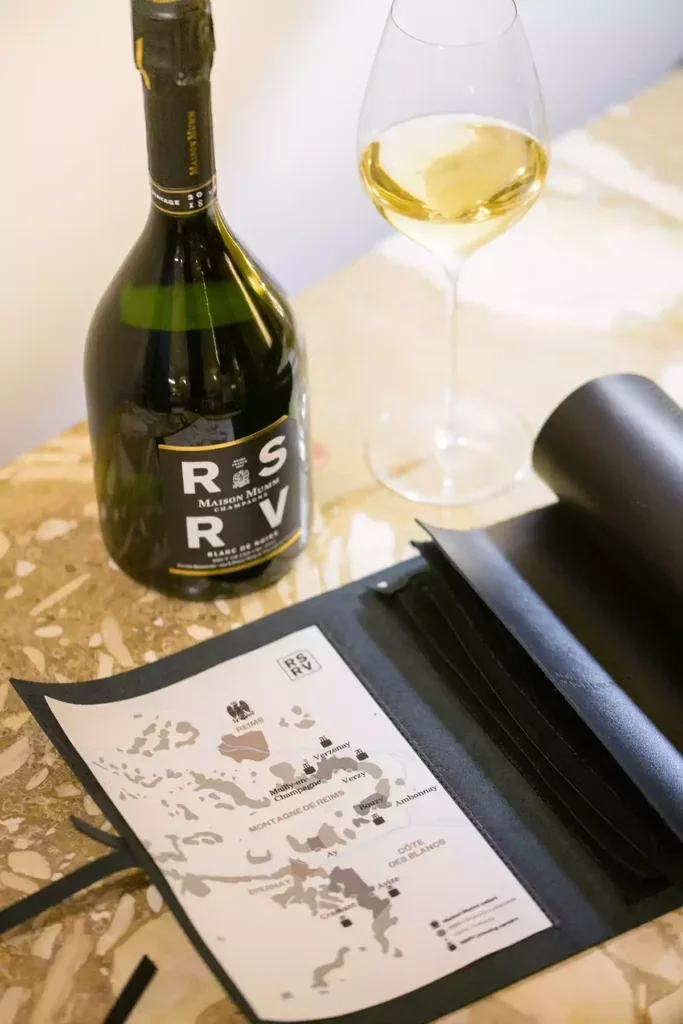
Tasting
RSRV Blanc de Blancs 2012 (magnum)
Poached oyster with soft oyster shell, white butter sauce, Oscietra caviar; Mussels, white asparagus, pasta, blanc de blancs sauce
Chardonnay from plots owned by Mumm since 1882 in the chalk soils of Cramant. Pressure 4.5 bars; disgorged January 2019; dosage 6g/l.
Creamy, almost buttery in texture, with a line of crisply mineral, citrus energy, and the scents of ripe orchard fruit: apples, pears, mirabelles. A lovely combination of aerial elegance and precision and indulgent, pillow-soft texture. | 93
As well as beurre blanc and Oscietra caviar, the poached oyster came with sliced celeriac (“soft oyster shell”), spinach, mushroom duxelles, and a celeriac-and-rye crêpe. Enjoy all the components together, Sato instructed. It wasn’t difficult. Umami notes played off against buttery richness, sharpness, and freshness, saltiness, slipperiness, softness, and yielding crunch. It was a textural triumph designed to emphasize the freshness of Cramant, which it did, but it also threw the apple and minerality of the wine into sharper focus. For that reason, I preferred the pairing with the mussels, asparagus, pasta, and creamy Champagne sauce (additional ingredients: button mushroom and shallot), which emphasized Cramant’s luxurious creaminess and sweet fruit. (The dish was served, incidentally, once we had all felt our own personal square of uncooked pasta.)
RSRV Blanc de Noirs 2009 (magnum)
Grapefruit and tomato salad, burrata cheese, basil oil; Foie gras terrine, Pinot Noir-inspired crisp
Pinot Noir from the argilo-calcaire of Verzenay (where Georges Hermann Mumm bought the first vineyard in 1840) in the hot, dry, sunny 2009 vintage; disgorged in March 2019; dosage 6g/l.
Very slight peach tinge. Powerful, structured, and richly aromatic, with vanilla brioche and smoky spice, together with apricot and rhubarb notes giving sweet fruit and freshness. Generous and expansive, but with a steeliness running through to a long finish. | 94
The salad—grapefruit, fresh and dried tomato, Thai basil and Thai basil oil—was a disc on top of burrata and some grapefruit meringue, but I had a grapefruit-free version (someone has to be grapefruit-intolerant), and I may have been better off. Cyrille urged us to think about the texture of the soil and to concentrate on our salivation, but even so, the grapefruit was probably an ambitious taskmaster for the ripe Pinot Noir. The foie gras terrine marinated in ratafia de Champagne emphasized the density, structure, and complexity of the Pinot, while slivers of beetroot and apple, raspberries, and a Pinot Noir-inspired sheet of beetroot, apple, and raspberry emphasized its freshness. The sheet was just a tiny bit sweet, but it worked with the rosé when taken with the foie gras, as intended.
RSRV Cuvée 4.5 (magnum)
Blue lobster, whelk, burdock, blue-foot mushroom
A blend of five of Mumm’s grands crus: 60% Pinot Noir from Verzenay, Aÿ, and Bouzy; 40% Chardonnay from Cramant and Avize. Base year 2015; disgorged March 2023; dosage 6g/l in a liqueur from the same crus.
Power and flesh from the ripe 2015 Pinot is lifted by high-wire tension and woven with salty sourdough toast, coffee bean, and honeyed citrus. Beautifully balanced. | 92
It’s the combination of depth and liveliness that makes this cuvée work so well both as an apéritif and with the wonderfully umami and texturally complex lobster, whelk, and mushroom dish—Japanese whelk, blue-foot mushroom (including as mushroom chips), burdock root (gobo), on a buttery sauce made from the juice of all the ingredients. It’s hard to choose, but this was perhaps my favorite pairing, together with the mussel dish and the Blanc de Blancs.
RSRV Rosé Foujita (magnum)
White peach and blanc de noirs mousse
Base-wine blend as for RSRV Cuvée 4.5 (60% Pinot Noir from Verzenay, Aÿ, and Bouzy; 40% Chardonnay from Cramant and Avize), with red wine from another Mumm grand cru, Ambonnay. Base year 2012; disgorged March 2019; dosage 6g/l.
No holding back on color here: deep pink. And no holding back on the palate, either: generosity, vinosity, succulence, and billowy texture. Strawberry and cassis, vanilla cream and shortcake notes and delicately mineral, lively freshness. | 94
This is a rosé that would be comfortable with many savory dishes—from salmon, through to game birds—but even with its glorious fruit, it’s not for me an obvious dessert wine. I don’t subscribe to the view (held by Cyrille Tota among others) that rosé Champagne always goes with red berries. The jellied peach and raspberry compote with blanc de noirs mousse—Chef Sato’s playful take on peach Melba—was light, delicately intense, and not overly sweet, but I didn’t feel it quite hit it off with the Foujita. They didn’t fight, but they sat respectfully apart.

